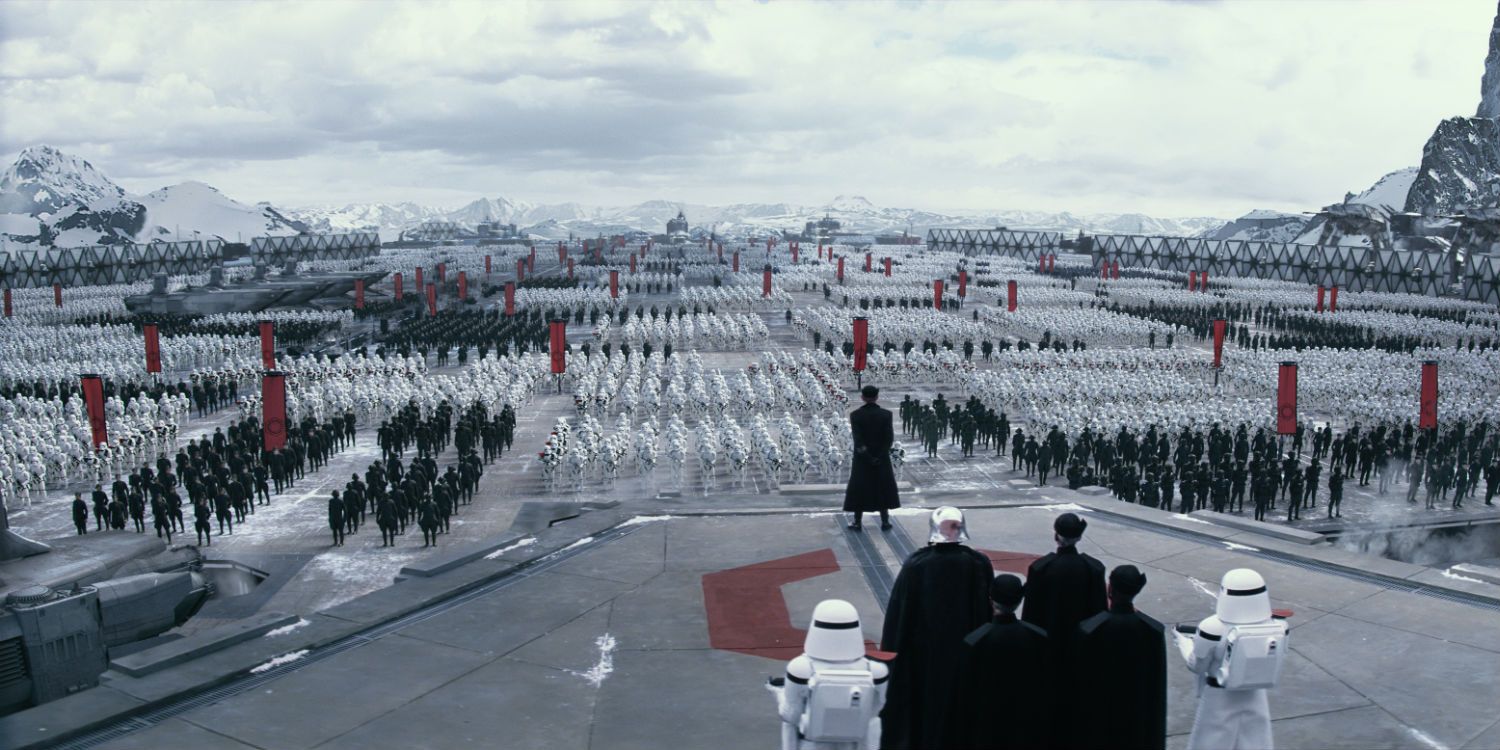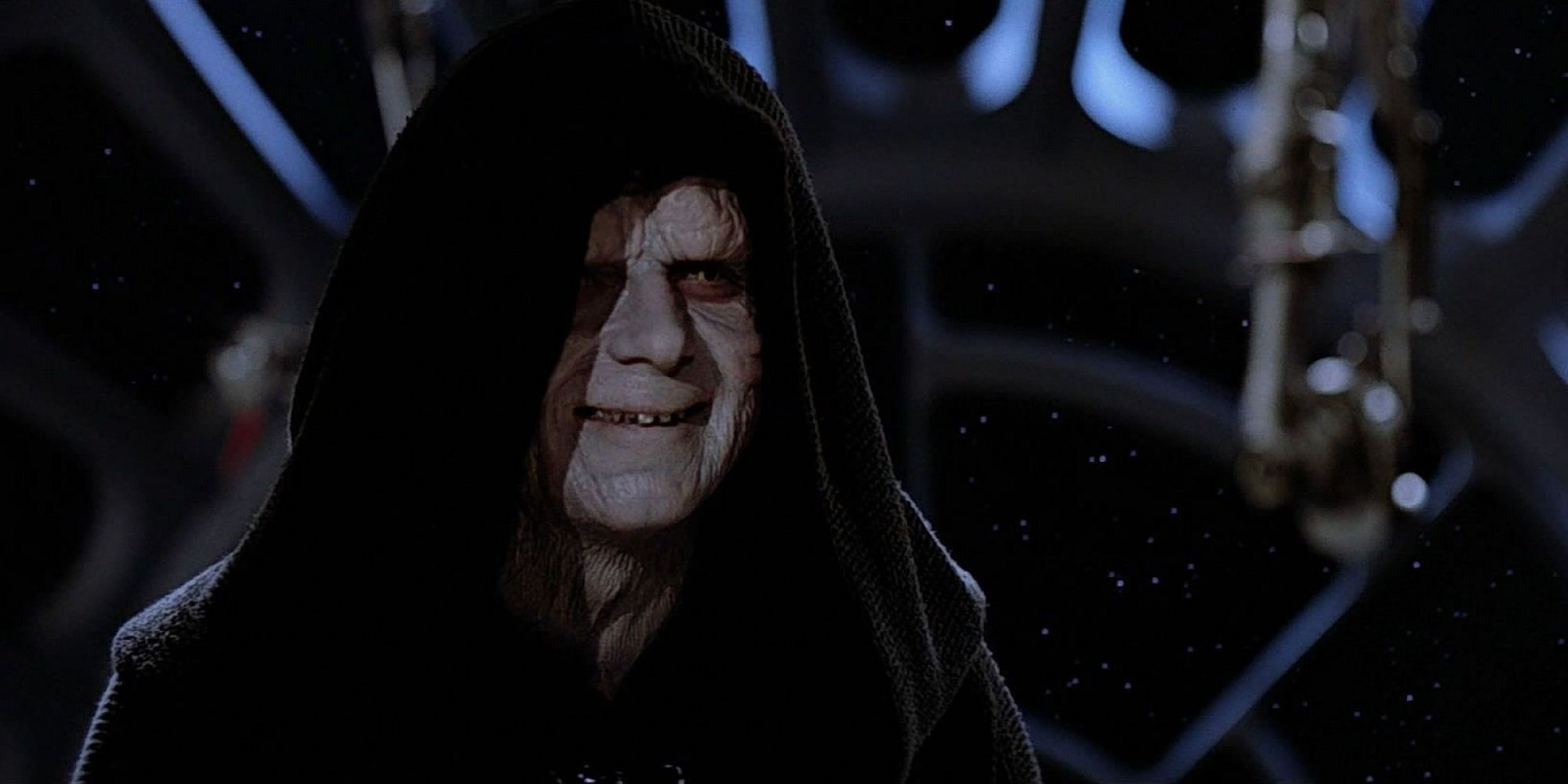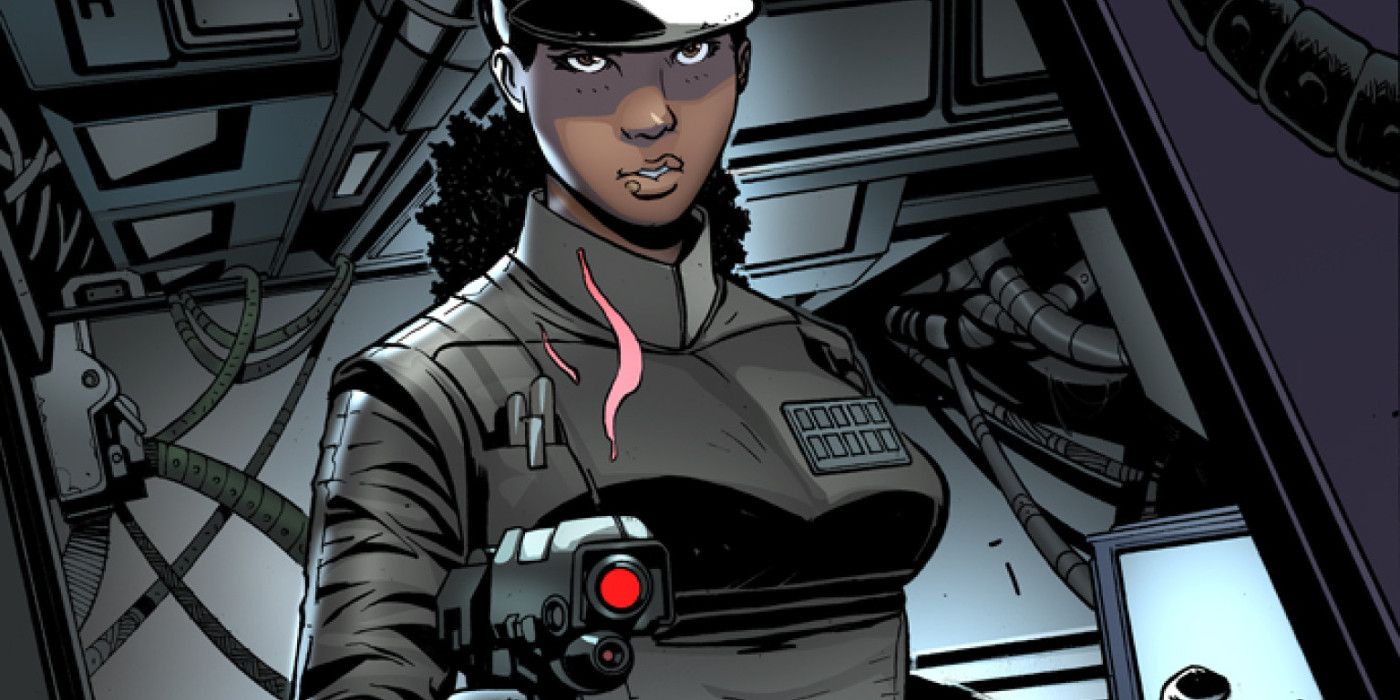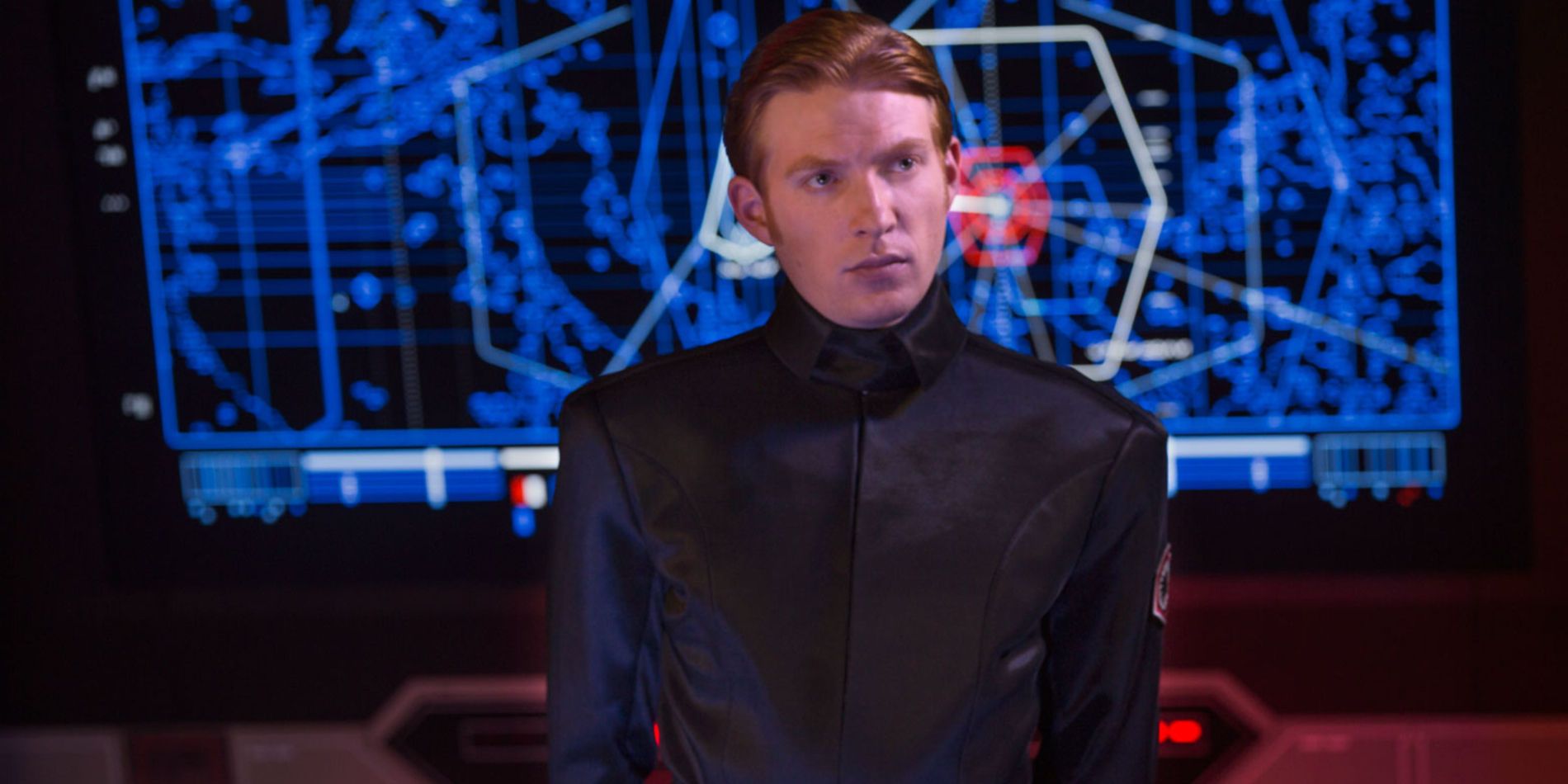WARNING: spoilers for Star Wars: Aftermath – Empire’s End follow.
-
Today is a day of (half) answers, as Star Wars: Aftermath – Empire’s End - the third and final installment of a trilogy of novels that covers the end of the Galactic Civil War between the Rebel Alliance and the Empire - hits store shelves. It is, to date, the biggest and boldest component of the “Journey to The Force Awakens” publishing program, which endeavors to fill in the 30-year gap in between Episode VI: Return of the Jedi and Episode VII: The Force Awakens. Given that this is one of the last major releases before Episode VIII: The Last Jedi bows in theaters this December, we must treat the book exactly how Lucasfilm wants us to: as a vital, though subtle, set-up for all the revelations that are sure to arrive in the next film chapter.
Indeed, while the story is almost exclusively set just one year after the destruction of the second Death Star and the extinction of the Dark Lords of the Sith, Empire’s End gives us our biggest clues yet about the First Order’s eventual creation, and even the arrival of the Knights of Ren (of which Adam Driver’s Kylo Ren is a member) and the enigmatic Supreme Leader Snoke (Andy Serkis) both.
The Emperor’s secret plan
To understand the sequel movies, we must first revisit the originals, for one of the Aftermath trilogy’s biggest reveals actually has to do with the past as opposed to the future.
Sheev Palpatine (Ian McDiarmid), it transpires, was busy lacing the galaxy with secret installations well before he names himself emperor and declares the Old Republic dead. Each has a different purpose – housing ancient Sith artifacts, advanced weaponry, or high-value prisoners – but all are united in preparing for a doomsday scenario, a contingency plan that would leap into effect should the unthinkable ever happen: Lord Sidious’s untimely death.
The Emperor’s ultimate goal, should he shuffle off this mortal coil, is to have his chosen successor escape the boundary that is the galactic rim and move freely through interstellar space, where a new Empire in a new galaxy could be established, free from the blemishes of any Rebellion or Jedi. Although he secretly dispatches countless research teams, exploratory vessels, and probe droids to attempt the journey during the lifespan of the Galactic Empire, most are lost thanks to the countless – and bizarre – navigational dangers that lurk within Unknown Space, which include “a labyrinth of solar storms, rogue magnetospheres, black holes, gravity wells, and things far stranger.” It is not until shortly before his death that a series of ancient “computational mechanisms” he has recovered (possibly from the previous Sith Empire a thousand years ago) are able to finish the decades-long work of charting a safe trajectory beyond the rim – the Contingency is now a viable possibility.
This kicks into action, of course, right after the Battle of Endor, and it centers around two individuals: the always-kept-in-reserve Fleet Admiral Gallius Rax, his handpicked successor, and Imperial Adviser Yupe Tashu, one of the scary-looking, purple-clad individuals spotted consulting with the Emperor on the second Death Star (and one of the few people who know that Palpatine was secretly a Sith Lord). Working in tandem, they lead the remaining Imperial elements to the distant world of Jakku, where one of Palpatine’s secret bases, called the Observatory, is located, and trigger a self-destruct sequence that will obliterate the planet, what remains of the Empire, and the vast bulk of the New Republic fleet all in one fell swoop (though the detonation is ultimately prevented). If Palpatine can’t have this galaxy, no one can.
But Rax, it turns out, has his own improvisations on the Emperor’s plan. Believing that their obsessive fixations with the Force have driven both Palpatine and the cultist-groupie Tashu to distraction, he assassinates the latter, ensuring that his new Empire will have a far stronger, dark side-free foundation to work off of.
The rise of the First Order
The brilliant, grandiose Fleet Admiral Gallius Rax, however, suffers the same fate that his predecessor succumbed to: he is betrayed by one of his closest allies and murdered.
Admiral Rae Sloane, who was originally introduced in the Star Wars: Rebels prologue book A New Dawn and who has since expanded her appearances to include several comic books and short stories, is promoted to grand admiral and is named the acting head of the post-Palpatine Galactic Empire (yes, Grand Vizier Mas Amedda [David Bowers] is still alive, but he’s an impotent figurehead, and nothing more). All of this is orchestrated by Gallius, who prefers to operate from the shadows, but he doesn’t take into account Sloane’s full-throated, ideologically-pure commitment to Imperial rule and order; she thinks that the Emperor’s lust for power and hubris were fatal flaws, but she still believes in the fundamental necessity of law and order ruling an otherwise chaotic galaxy. The more she follows Rax’s orders to, say, ignore the raging civil war on Coruscant or to eliminate fellow high-ranking Imperial officers, the more disillusioned she becomes with him and his convoluted, self-serving machinations. Her only option, she concludes, is to take out the man who is following the Emperor in deed and ego, if not technically in name.
It is not until the Empire’s final stand on Jakku that she discovers that the fleet admiral’s agenda was at the express, posthumous order of a vengeful Palpatine. This revelation, however, only reinforces her belief that both men sullied the Empire they wanted to lead – by taking Gallius’s place as the nexus of a new New Order beyond the rim, she can ensure that true Imperial rule is properly conceived and executed for the very first time in recorded history. Meeting up with the Super Star Destroyer Eclipse in Unknown Space, which was dispatched by Lord Sidious shortly before his demise, she offers up this new mission statement:
It’s time to start over. […] That is our first order. To begin again. And to get it right this time.
The first order, in other words, is to establish a more ideologically pure version of either Palpatine’s or Rax’s Empire, one whose veneration is of the system itself than of any particular member of it, emperor or no.
The arrival of Snoke
This is where hard narrative fact ends and our supposition has to begin.
While it is clear that Supreme Leader Rae Sloane fully intends to settle a new galaxy, it’s also obvious that, at some point, her First Order returns to the one that we know and love - the one that is now dominated by the New Republic. One of the key individuals to leave with Sloane is an extremely young Armitage Hux (Domhnall Gleeson), who eventually rises to the rank of general in their new Empire and is at the forefront of the Second Civil War that begins in The Force Awakens.
It is currently unknown at what point the neo-Imperials return to the galaxy, whether Rae arrives with them, or how they begin to interface with the leftover Imperial remnants that are, as part of their Galactic Concordance with the New Republic, given specific tracts of space to remain in (as long as they no longer arm themselves and stay within their borders, Supreme Chancellor Mon Mothma is only too happy to consider them historically irrelevant and forever trapped within their boundaries). What we do know – thanks to the events of the novel Bloodline – is that the First Order has fully returned and is beginning to ramp up its clandestine funding (via black-market dealings) and political connections with certain, Imperially-friendly blocs of the Galactic Senate, 23 years after their extragalactic departure.
Although only a guess at this point, it is entirely possible – if not extremely likely – that the man who would eventually replace Sloane as the supreme leader of the First Order, Snoke, was discovered somewhere beyond the rim, whether as a denizen of another galaxy or as a fellow interstellar traveler (making him something of an elite member of the cosmos, as such a technological/spiritual feat is practically unheard of in Star Wars lore). Such an exotic origin would scratch several narrative itches simultaneously: it would explain how he is so powerful with the Force (assuming that its foundation is located somewhere in the expanse between galaxies, as Palpatine came to believe before his death); could potentially explain his thoroughly alien appearance; would be yet another (loose) callback to the original iteration of the Expanded Universe, in which the interstellar Yuuzhan Vong invade the galaxy and nearly topple the New Republic and Luke Skywalker’s (Mark Hamill) new Jedi Order; and, finally, it would help make him stand out not only amongst all the other Star Wars villains, but amongst the franchise’s entire cast, as well. All of these are sorely needed when trying to make him a different enough variation on the Emperor Palpatine theme.
It just may be that our next batch of (half) clues will arrive in the book Thrawn, which is currently scheduled to release on April 11, 2017; it is explicitly stated in Aftermath: Empire’s End that the only reason Palpatine kept the alien Thrawn around was because of his origins from within Unknown Space. If we’re lucky, we’ll get our first inclinations of whether our hypothesis on Snoke’s true nature is sound or way off-base then.
-
Star Wars: Aftermath – Empire’s End releases today.




